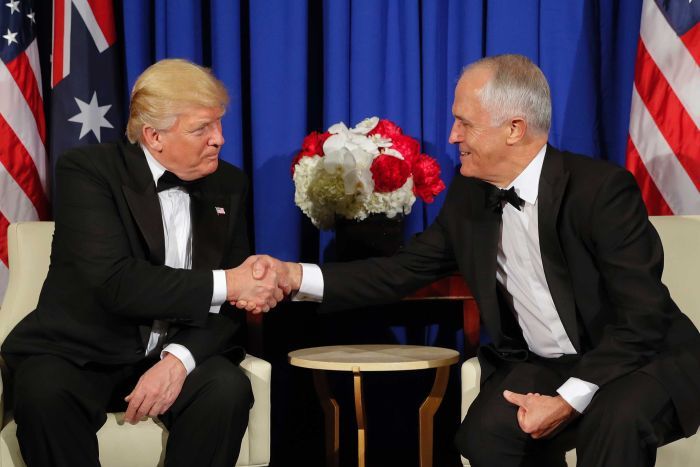The presidency of Donald Trump makes this a difficult time for any ally to contemplate closer institutional links to the United States.
Nevertheless, strengthening the US–Australia alliance has strong bipartisan support in Australia.
Polls indicate that recognition of the importance of the US alliance, and support for closer cooperation, has actually increased in Australia since Trump was elected, and Australia’s defence and foreign-affairs ministers have maintained good relations with their US counterparts.
Moreover, the US emphasis on the ‘Indo-Pacific’ in the 2017 ‘National Security Strategy’, and on working with allies in the 2018 ‘National Defense Strategy’, reflect a US perspective on regional security that is in tune with Australian thinking.
Building alliance institutions fit for the challenges facing Australia and the United States, however, will require changes on both sides that would be difficult and challenging under any US administration.
For Australia, this will mean confronting, for the first time in 50 years, the question of what it is willing to do to support its treaty commitments and how it might have to rely on the alliance in the defence of its continent against a nuclear-armed great power.
Once the possibility of US long-range operations staged from Australia is woven into Australian and US policy, questions about how logistical integration and Australian support for such forces should take shape may well transform not only Australia’s defence infrastructure in its northern region, but also its approach to defence procurement and even decision-making on the ADF’s force structure.
For the United States, strengthening the alliance will require devoting more time and effort to an ally that Washington has customarily valued precisely because it did not require the same level of attention as US alliances in Europe and Northeast Asia.
Given the strength of Australia’s case for operational leadership in its own defence, and the need for ANZUS to operate more visibly as an alliance, new command arrangements will probably require US commanders in INDOPACOM to become comfortable with dual-hatting – including the placement of some US forces under the political control of the alliance.
Insofar as Washington and Tokyo look to reinforce Australia’s indirect treaty obligations to the defence of Japan, they will need to pay greater attention to the way Australia too should be reflected in institutional arrangements.
An expectation of Australian commitment to the defence of Japan warrants involving Australia in US–Japan bilateral discussions on this issue.
Some 67 years after Australia and the United States signed the ANZUS Treaty, their defence cooperation remains close in the realms of intelligence- sharing and out-of-area military operations, especially in the Middle East.
The rise of China as a great power in Asia, however, now presses the long- dormant strategic question of what the treaty should mean in the Asia-Pacific region itself.
Negotiating a strategic policy framework to guide peacetime influence and crisis management; developing joint command arrangements for alliance forces; and examining the political and military aspects of the defence of Australia and US long-range operations from the continent will enable the United States and Australia to work together to reduce the likelihood of an attack, and react effectively to one should it occur.
By linking practical cooperation to detailed understandings of their treaty commitments, the two allies would not just transform their defence relationship; they would now, finally, complete the construction of their alliance.
This was the conclusion of Frühling’s recently published article entitled “Is ANZUS really an Alliance? Aligning the US and Australia, published in Survival and is republished with permission of the author.
The full article can be found here:
https://www.tandfonline.com/doi/full/10.1080/00396338.2018.1518384
For a look at another look at the issues which Frühling discussed, see the following:
The featured photo shows President Trump with Prime Minister Turnbull during the latter’s visit to the United States earlier this year.
Photo Credit: AP: Pablo Martinez Monsivais
Also see, the latest Williams Foundation report:
The ADF and the Way Ahead for an Australian Deterrent Strategy


